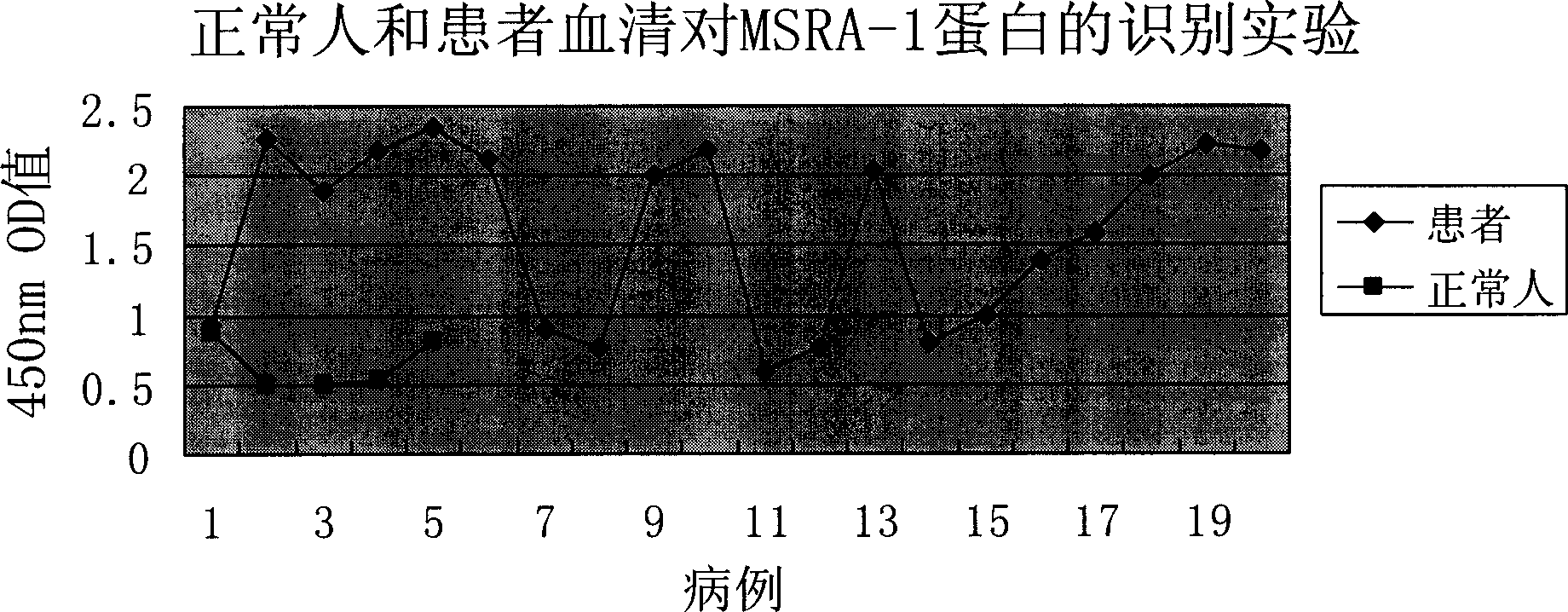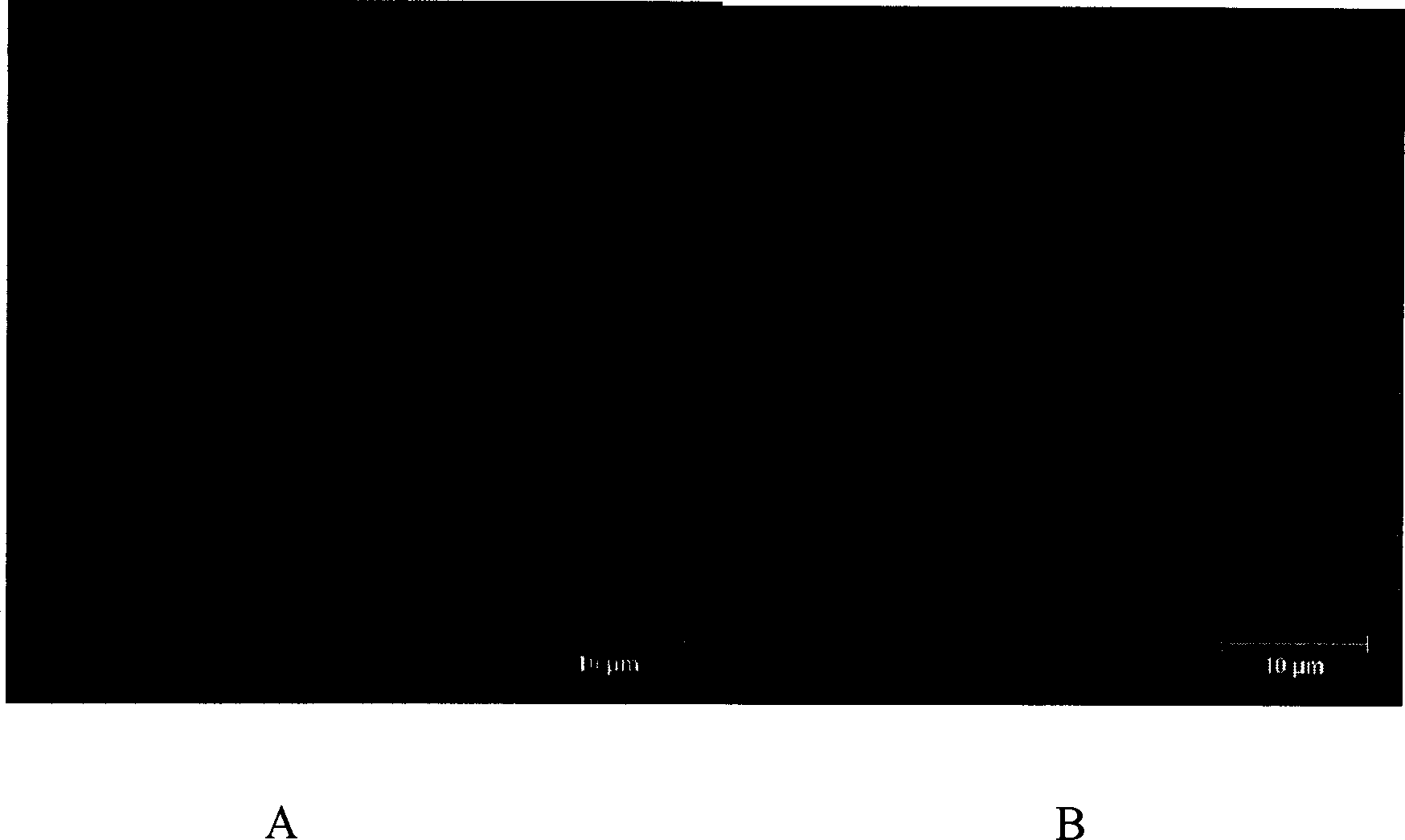Maiignant malarial parasite msra-1 gene, protein product and use thereof
A technology of Plasmodium falciparum, residues, applied in genetic engineering, immunoglobulin, plant genetic improvement, etc., can solve the problem that the red endogenous antigen is not fully protected, it is difficult to obtain immune protection, and it is difficult to obtain malaria parasite protection. And other issues
- Summary
- Abstract
- Description
- Claims
- Application Information
AI Technical Summary
Problems solved by technology
Method used
Image
Examples
Embodiment 1
[0012] Example 1: Cloning and sequence analysis of the Plasmodium falciparum protein msra-1 gene
[0013] Design primers (upstream primer: CGGGATCC AAGATGG ATGACATGTTTGCAAACCAA (Bold and italic is the BamHI restriction site, and the horizontal line is the Kozak fragment); downstream primer: CCCTCGAG TTA AGTTAGTAATAAATTATGAA (bold and italic is the XhoI restriction site, and the horizontal line is the termination site)) amplifies msra-1 from the genomic library of Plasmodium falciparum 3D7 strain (prepared by extracting DNA from the American ATCC standard 3D7 strain) For the full-length gene, 1 μl of amplification condition template, 4.5 μl of upstream and downstream primers, 30.75 μl of triple distilled water, 0.25 μl of ExtaqE, 5 μl of buffer, 4 μl of dNTP, and 50 μl of the total system. 94 pre-denaturation for 5 minutes, 10 cycles (denaturation at 94°C for 1 minute, annealing at 48°C for 1 minute, extension at 72°C for 1 minute), and then 20 cycles (denaturation at 94°C f...
Embodiment 2
[0015] Example 2: Recognition experiment of MSRA-1 N recombinant protein and patient serum
[0016] 1. Subcloning and expression of MSRA-1 N-terminal 180 amino acid peptide
[0017] Using WINSTAR software analysis, msra-1 gene N-terminal 67bp to 606bp sequence has high antigenicity. Design primers based on this sequence: upstream primer 5′CG GGATCC GATACAAATAATACA 3', which contains a BamHI site (underlined), downstream primer 5' CCG CTCGAG TTGAGGTTTATGA3', which contains an XhoI site (underlined), was amplified by PCR with this pair of primers from a pcDNA3.1-msra-1 recombinant clone (obtained by cloning the amplified msra-1 gene into pcDNA3.1) 540bp fragment. After this fragment was digested with BamHI and XhoI, it was subcloned into the Escherichia coli expression vector pGEX-4T-1 (ie, GST vector, obtained from Pharmacia). The correct clone was transformed into Escherichia coli BL21 (DE3) strain, induced by IPTG at 37°C for 2 hours, and a fusion recombinant protein of...
Embodiment 3
[0022] Embodiment 3: Indirect immunofluorescence analysis (IFA) detects the recognition of the polyclonal antiserum of anti-Plasmodium falciparum MSRA-1 protein and native protein
[0023] 1. Subcloning of the open reading frame (ORF) of msra-1
[0024] Primers were designed according to the sequence of msra-1: upstream: 5′CGGGATCC AAGATGG ATGACATGTTTGCAAACCAA 3′, BamHI site (bold italics) and Kozak fragment (underlined), downstream: 5′CCCTCGAG TTA AGTTAGTAATAAATTATGAA3', including XhoI site (bold and italic part) and termination site (underline), was amplified by PCR with this pair of primers to obtain a 1077bp fragment from the genome of Plasmodium falciparum ATCC standard 3D7 strain. After this fragment was digested with BamHI and XhoI, it was subcloned into the eukaryotic expression vector pcDNA3.1 (Invitrogen Company).
[0025] 2. Preparation of serum from immune mice
[0026] Use the recombinant vector plasmid obtained in 1 to immunize Balb / c mice to prepare polyclo...
PUM
 Login to View More
Login to View More Abstract
Description
Claims
Application Information
 Login to View More
Login to View More - R&D
- Intellectual Property
- Life Sciences
- Materials
- Tech Scout
- Unparalleled Data Quality
- Higher Quality Content
- 60% Fewer Hallucinations
Browse by: Latest US Patents, China's latest patents, Technical Efficacy Thesaurus, Application Domain, Technology Topic, Popular Technical Reports.
© 2025 PatSnap. All rights reserved.Legal|Privacy policy|Modern Slavery Act Transparency Statement|Sitemap|About US| Contact US: help@patsnap.com



